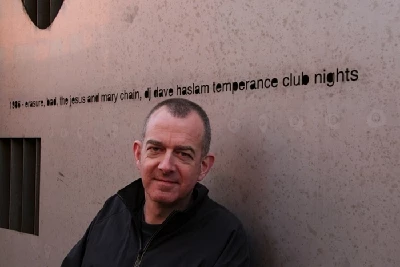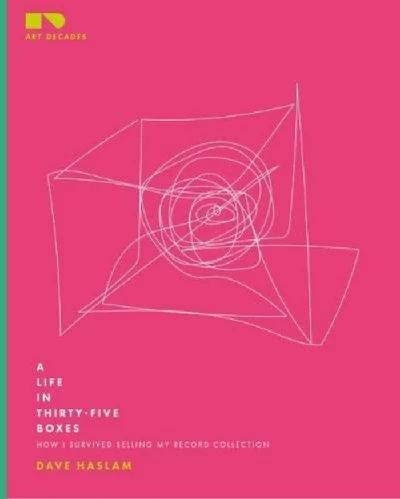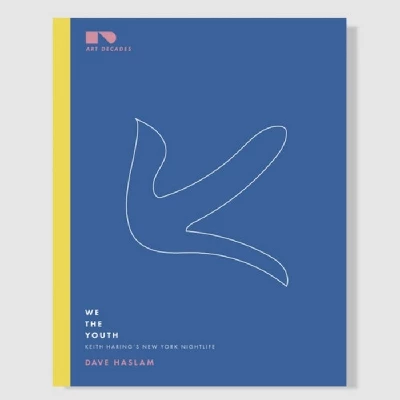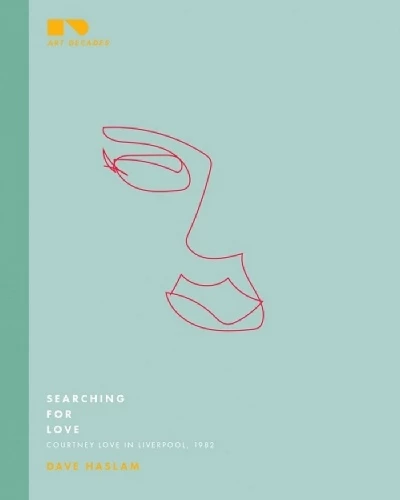published: 27 /
5 /
2020

Nicky Crewe takes us through the first three titles of Dave Haslam’s 'Art Decades' series, which are a captivating taste of more to come
Article
'Art Decades' series by Dave Haslam (books 1-3)
'A Life in Thirty-Five Boxes' (2019)
'We The Youth' (2019)
'Searching For Love' (2020)
I have to admit that I have never seen Dave Haslam DJ at an event. Our Hacienda days didn’t coincide and the first time I saw him at work was when he interviewed Will Self some years ago.
After that I looked out for events where he was asking the questions. With regret I have missed a few, including David Byrne, Nile Rodgers and John Lydon, but I’ve made it to some great ones. Michael Chabon, Lemn Sissay, Tracey Thorne and Pete Shelley were particularly memorable. He is a great interviewer, well prepared with lots of research, but he also makes a real connection with the interviewee, either through shared enthusiasms or a personal link.
This series of 'Art Decades' books builds upon that approach. The first of his books I read was 'Manchester, England: The Story of the Pop Cult City' which was really helpful as historical and cultural background when I was working in the city's archives.
Our paths crossed and I was interviewed for his history of British nightclubs and music venues, "Life After Dark". I also contributed to a book of essays he put together to accompany an exhibition at the Manchester City Art Gallery which highlighted the links between New York and Manchester, 'Dreams Without Frontiers' - the first time I’d seen my writing in print. His autobiographical book 'Sonic Youth Slept On My Floor' is a great read that brought him a lot of attention as a writer and commentator.
So after the success of that, what next? Dave Haslam went to his agent with three strong ideas, and rather than spending a couple of years on each, researching and writing full-length books, he decided to create a series of mini-books, each longer than an article and closer to an extended essay. The plan is that there will be eight of them, eventually making up a boxed set. They are beautifully produced, locally published, pocket sized (if you have generous pockets) with simple, colourful and eye-catching covers, and just over fifty pages each. Perfect books for when you are on the go, except none of us are going anywhere at the time of writing.
Two of them came out in 2019 and Dave promoted them at various literature events and book stores. The third in the series came out this year, and just before the lockdown, at the beginning of March 2020, I made it over to the wonderful Hyde Park Book Club in Leeds to listen to Dave talk about the series in conversation with Denis Flannery as part of the Leeds Literature Festival. A week later and everything was being cancelled and postponed.
The first in the series, 'A Life In Thirty-Five Boxes: How I Survived Selling My Record Collection' follows on from "Sonic Youth...", homing in on the decisions and experiences that led to him to sell the extensive vinyl collection he'd built up over years of being a DJ. Another DJ, Seth Troxler, bought the collection as a whole. In a short book Dave manages to explore themes around collecting, hoarding, identity and memories from his own experiences, but also through interviews with others including Daniel Soutif in Paris.
An art collector, Mauro del Rio, was interested in his collection as an art piece. As Dave writes, "a collection reminds us of the road we’ve travelled and provides a link back to our past". He decided to set this particular aspect of his past free. "Saying goodbye to my records was like saying goodbye to a gang of friends leaving town for a new life on the other side of the world." It’s a book that will resonate with many music fans and record collectors, and it resonated for me: as he was making this decision and these changes, I was did my own version of sorting out the baggage of the past, moving from the family home to a different city and a new way of life.
The second of the books is about New York artist and activist Keith Haring. 'We The Youth: Keith Haring’s New York Nightlife' takes its title from a collaborative artwork made by Haring and a group of young teenagers from New York and Philadelphia in 1987. The book is an exploration of the New York scene of the late seventies into the eighties as there was an explosion of creativity in music, dance and all art forms in the face of poverty and dereliction in the city.
It’s a journey through makeshift clubs and venues accompanied by inspirational artists who are now household names, including Madonna, Jean Michel Basquiat, Arthur Russell and Grace Jones. It’s also a tale of gentrification and commercial pressures. Haring died of Aids in 1990 and the desperate sadness of those times is part of the story. Dave was able to interview Samantha McEwen, once Haring’s friend and housemate.
There are no images, and of course it’s Haring’s visual vocabulary that makes his work so instantly recognisable and appealing. Tate Liverpool hosted a major retrospective of his work last summer. I went twice, with good friends and family, and spent hours looking at his work, absorbing a story that I had been familiar with back in the early eighties, coincidentally as the Hacienda was opening and Manchester was on a parallel course of creativity and transformation.
The third book, 'Searching For Love: Courtney Love In Liverpool - 1982' is about a city that stands with both Manchester and New York as a place where myths and legends are part of its identity and where the truth should never be allowed to get in the way of a good story.
This particular good story is about Courtney Love’s time spent there. She referred to it in her 2018 book 'Dirty Blonde', and Pete Burns mentions her in his book 'Freak Unique'. Liverpool in 1982 was still reeling from the riots of the previous summer. The famous club Eric’s had closed its doors the year before that. There was a close group of artists and musicians who had been inspired by the music they had heard at Eric’s.
The mystery of Courtney Love’s time in Liverpool seemed a topic worth exploring, as people scratched their heads, wondering if they had met her. I must admit I did the same when I read that she travelled over to the Hacienda twice in 1982, first with Teardrop Explodes and later that year with Echo and the Bunnymen.
I would have been working on the door, in the ticket office or in the cloakroom, so it’s unlikely our paths would have crossed if she was with the band but I’m sure she would have been hard to ignore.
She travelled to the UK and Ireland with her friend Robin, who seems to have been better liked than Courtney. With her hunger for attention, a dysfunctional childhood behind her and a private income to support her, she must have been a force to be reckoned with. Robin shares some insights without being disloyal to an old friend and Bernie Connor also sheds light on the myths and reality.
There’s even the possibility that her father Hank brought the first ecstasy to Liverpool. It’s an intriguing and not unkind look at her impact on Liverpool and Liverpool’s impact on her. She has been in touch with Dave since the book came out and is happy with it.
The best reads resonate on a personal level, and that's what these three short books do for me. The fourth book is going to be about Sylvia Plath and there are connections there too. It will be something to look forward to in these unnaturally quiet and bewildering times.
Band Links:-
http://www.davehaslam.com/
https://www.facebook.com/DJDaveHaslam/
https://twitter.com/Mr_Dave_Haslam
Picture Gallery:-


